Ukraine Crisis reflecting features of Cold War
Author : Zhao Chuanjun Source : Chinese Social Sciences Today 2015-03-30
The U.S. and other Western countries have long elevated the cold war against Russia to strategic action and policy in practice from theoretical construction and political will.
In the wake of the Ukraine crisis, especially Crimea’s incorporation into Russia, the majority of the media and academics in the world began to claim U.S.-Russia relation is “on the brink of a cold war”, which resonates with most Chinese scholars as well.
Today, people come to such a conclusion largely because the concepts and characteristics of the Cold War in the 20th century have exerted profound influence on their judgment, so profound that people still have not been aware of the cold war in the 21st century. As such, it is necessary to delve into its nature and features.
Rethinking the nature of a cold war
The essence of a cold war is deliberately strategic confrontation, rather than a strategic game, nor occasional or accidental conflict or confrontation. A cold war is strategic confrontation on all levels, i.e., the political, military and economic levels. The final goal of a cold war is a “zero-sum result”, where a participant's gain or loss is exactly balanced by the losses or gains of the other participants, even if strategic compromise or cooperation may occur. The Cold War in the 20th century lasted for almost half a century before it came to an end with the dissolution of the Soviet Union and the Warsaw Pact, leaving the western countries on the winning side. We may call it as the “Cold War 2.0”, which is characterized by the confrontation between the two ideologies, camps, military groups and super powers. After the war, there was only one single super power, one military group and one camp. While we cannot see Cold War 2.0 now, the prelude to Cold War 2.1 has started before we know it.
In fact, even when people were acclaiming for the end of the Cold War as the Post Cold War era began, the U.S. and NATO had broken their promise of “NATO will never go further”, expanding to include almost all the Eastern European countries and the three Baltic states. Despite Boris Nikolayevich Yeltsin’s strong opposition and Slobodan Milošević’s stiff resistance in Kosovo, NATO finally took control after over two months’ aerial bombardment. In their next step, Western countries led by the U.S. launched inroads, in the form of “color revolution”, into CIS countries with Russia at the core. But for the Al-Qaeda and Osama bin Laden that diverted the U.S’s attention to wars in Afghanistan and Iraq, CIS countries, with the exception of Belarus and Kazakhstan, could have probably fallen into the hands of Western countries.
Ukraine Crisis reflecting features of Cold War 2.1
Ukraine has close historical, cultural and socioeconomic relations with Russia. It is a significant barrier between Russia’s western borderline and NATO members, serving as a base for Russia’s black sea fleet. Crimea has always been a battleground of strategic importance. The U.S. and NATO have aimed at Ukraine for a long time. In 2004, they planned and launched color revolution, helping Viktor Yushchenko to become President, who had amiable attitude toward the Western countries. Russia, however, still tried to preserve a normal bilateral relation with Ukraine.
March 2014, President Viktor Yanukovych reached a deal of $15 billion in loans with Russia and refused to sign an association agreement with the European Union. Western countries then launched a revolution to overthrow Yanukovych. Russia included Crimea into its territory. The much-shocked Western countries then fought back from all levels. Western countries kicked Russia out of G8 and isolated Putin on the G20 summit in Brisbane. They have launched several rounds of economic sanctions in the fields of finance, energy, military industry and high technology, making it even harder for Russia’s economy. On the military level, U.S. navy reached the coast of the Black Sea; NATO began to send army to Poland and Lithuania and plan to launch a troop of 4,000 while claiming to expand military budget.
Russia adopted some countermeasures, increasing the intensity of strategic bombers cruise, expanding military budget and speeding up modernization of its army. In terms of foreign relations, Russia further strengthens its strategic partnership with China while seeking to enhance cooperation with India, Turkey, North Korea and Vietnam, committed to building a Eurasian Economic Community in an effort to seek political support and economic cooperation.
As can be seen from the above, a cold war has started as the confrontation between the U.S. and Russia has already got the essential features of a cold war, although it has different representations compared with the Cold War 2.0. The Ukraine Crisis helped the world to see the whole picture of the Cold War 2.1.
New features of Cold War 2.1
Former U.S. Secretary of State Henry Kessinger once said reoccurrence of the Cold War would be a historical tragedy. Hungarian President Viktor Orbán said the U.S. is trying to involve the European Union in the cold war against Russia. In 2014, the Ukraine Freedom Support Act was passed by U.S. congress and signed by Obama. Russia’s Ministry of Foreign Affairs said the act is open confrontation. Aleksey Pushkov, the head of the foreign-affairs committee in the State Duma, maintained that the current U.S-Russia relation is a new version of a cold war. He stressed that Obama had announced policies of containing and isolating Russia. Containment and isolation are the characteristics of a cold war.
The final goal of the new cold war against Russia is not Putin and the current Russian government, but to “remove the bear’s paws”, “pull the bear’s teeth”, and “chain the bear” so that it can have honey silently in the forest, said Putin.
The Cold War 2.1 is between one political, economic and military group and one country, i.e., the U.S. led alliance including NATO and EU against Russia, which is an asymmetrical cold war.
Its visibility and intensity vary from time to time. In order to ensure its own security, the world’s leadership and optimal overseas interest, the U.S has never changed its cold war policy against Russia fundamentally. Its containment and isolation of Russia varies only with the international situation (for example, the outbreak of the 9.11 attacks and the financial crisis) and with each president’s style and strategy.
The Chinese version appeared in Chinese Social Sciences Today, No.704, Feb 11, 2015.
Translated by Jiang Hong
Ye Shengtao made Chinese fairy tales from a wilderness
Ye Shengtao (1894–1988) created the first collection of fairy tales in the history of Chinese children’s literature...
-
How northern ethnicities integrated into Chinese nation
2023-09-18
-
Mogao caves
2023-09-12
-
Mogao Grottoes as ‘a place of pilgrimage’
2023-09-12
-
Time-honored architectural traditions in China
2023-08-29
-
Disentangling the civilizational evolution of China
2023-08-28
-
AI ethics in science fiction
2023-08-23




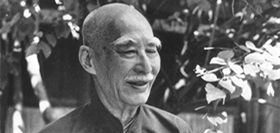
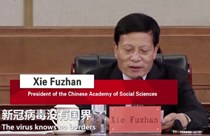
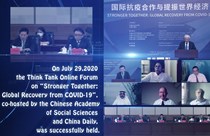
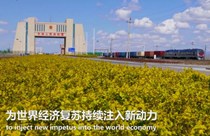
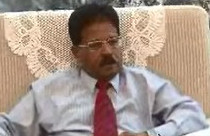
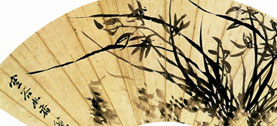

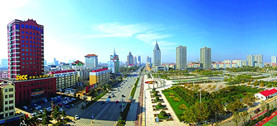


 2011-2013 by www.cssn.cn. All Rights Reserved
2011-2013 by www.cssn.cn. All Rights Reserved